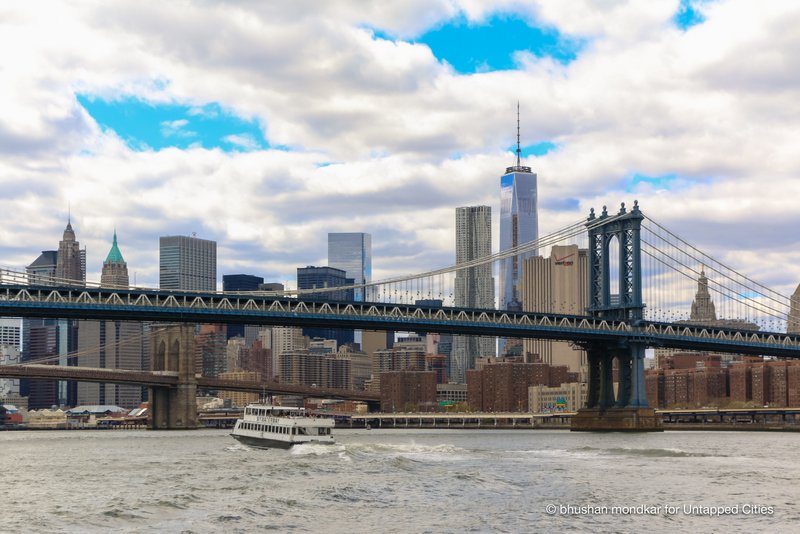
The highly anticipated launch of Citywide Ferry Service this summer will redefine how New Yorkers explore and experience the East River waterfront. Apart from the resurgence of ferry transit in the last decade, generations of New Yorkers have grown up without a connection to ferries or a sense of water as a vital link between the boroughs. The return of ferries to our lives and communities is a historic opportunity to dig into the secrets of our waterfront neighborhoods and explore New York’s glorious but largely hidden ferry past.
Here are 10 fun ferry-related historical facts about the New York City waterfront:
1. The Hamilton Avenue Ferry: An old link and district in Red Hook lost to post-war development
In the 1850s, Brooklyn’s Union Ferry Company operated seven routes to lower Manhattan. The southernmost of these was the Hamilton Avenue Ferry, which began in 1846. The ferry landing was situated at the tip of Hamilton Avenue, near the burgeoning operations of the Atlantic Basin, which was built by the Atlantic Dock Company in 1844. The Hamilton Avenue Ferry provided transportation for Atlantic Dock Co. employees and later, other Red Hook workers and residents.
A entertainment district called Ferry Place sprang up around the landing, and lasted through the 1930s. In the 1940 and 50s, Hamilton Avenue was transformed by construction of the Brooklyn Battery Tunnel and the Brooklyn Queens Expressway. Ferry Place was later incorporated into the Red Hook Container Terminal, developed in the 1980s by the Port Authority of New York and New Jersey. Thanks to community input and advocacy, Red Hook’s Citywide Ferry Service stop will be sited at Clinton Wharf in the Atlantic Basin, near the Brooklyn Cruise Terminal.





